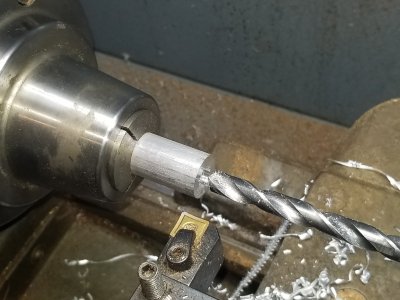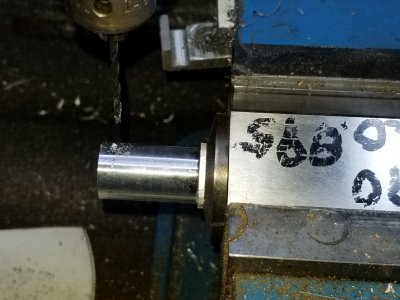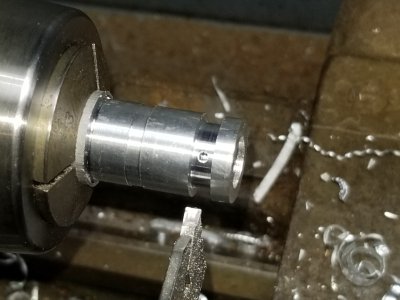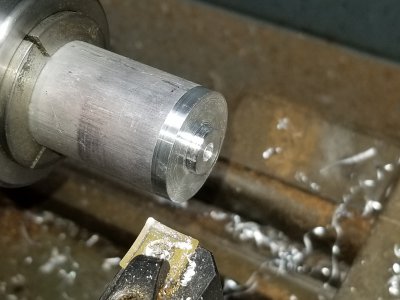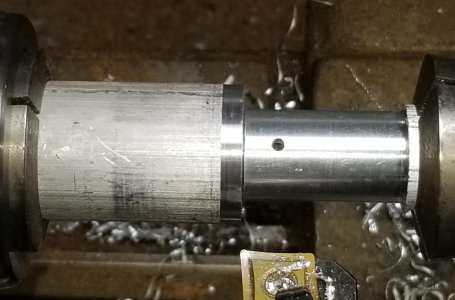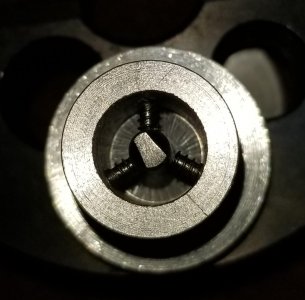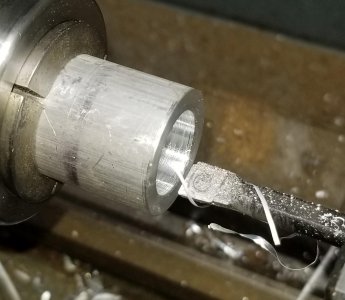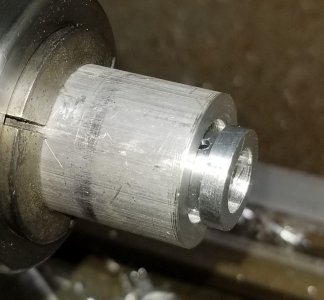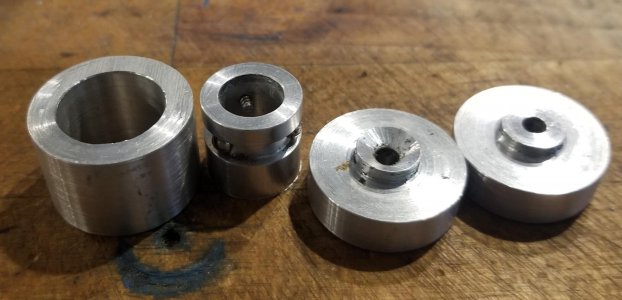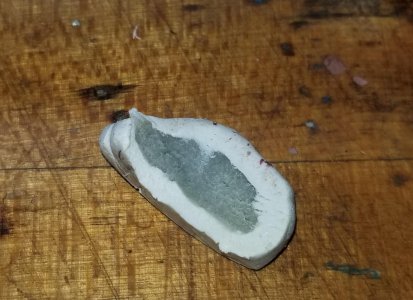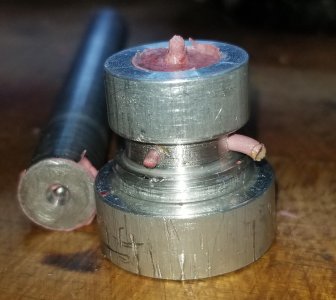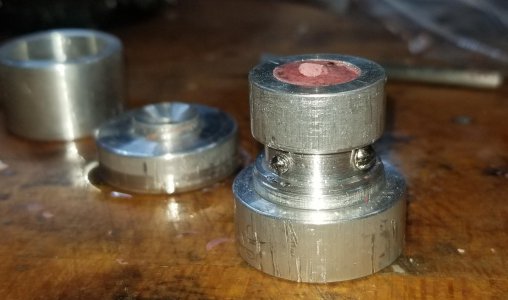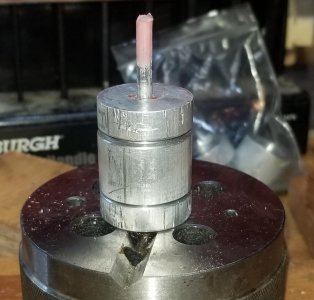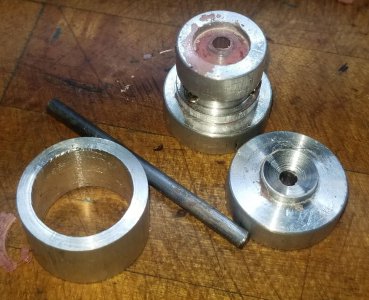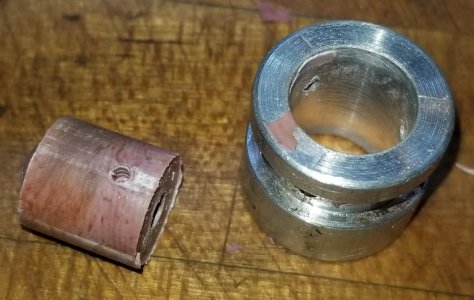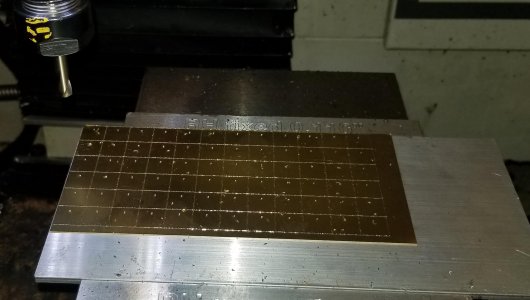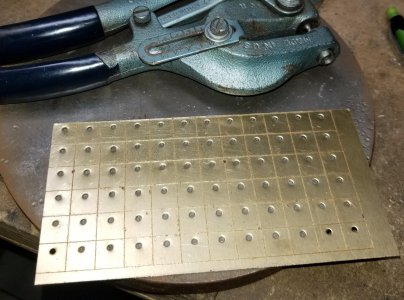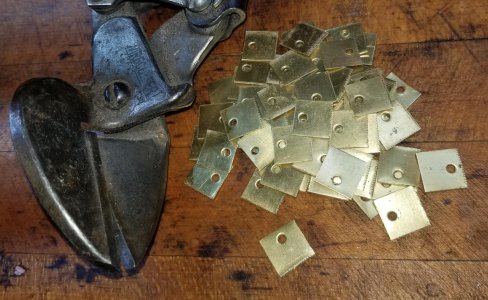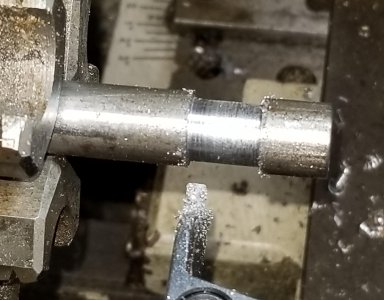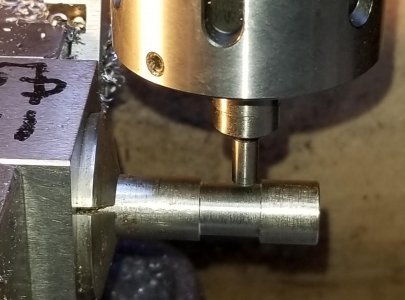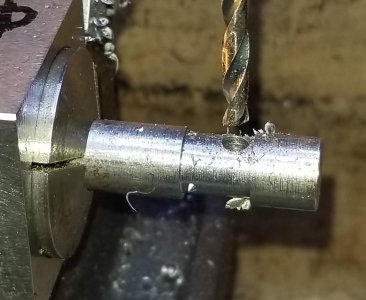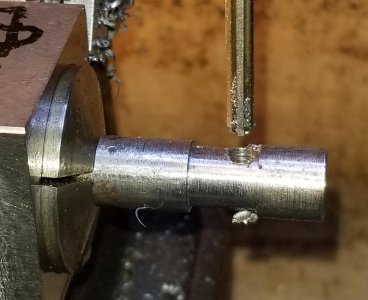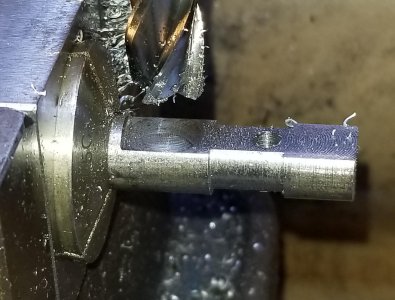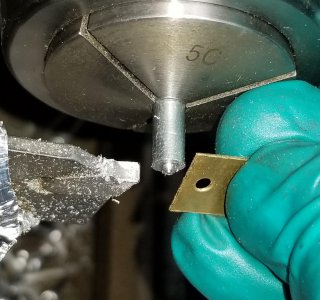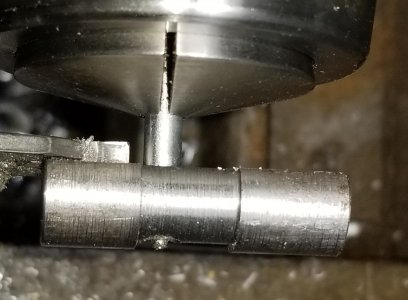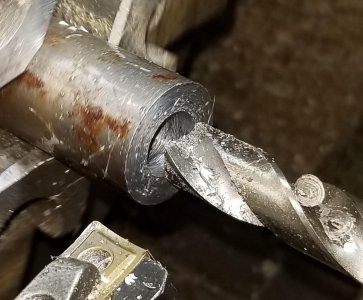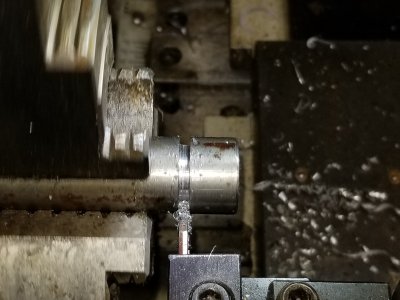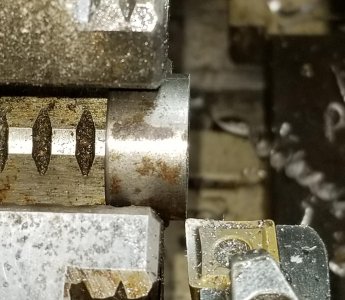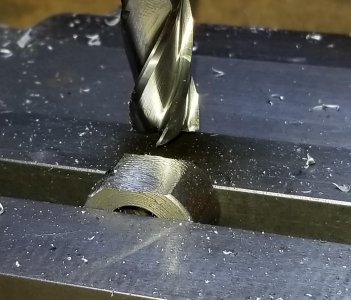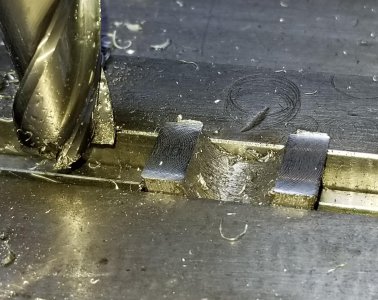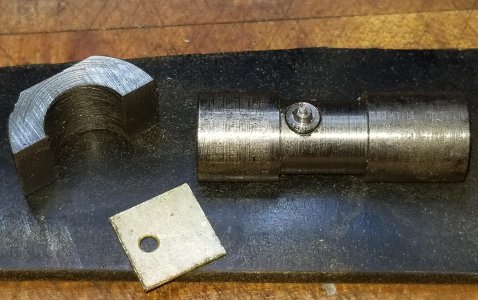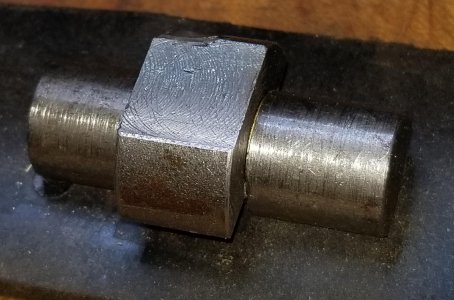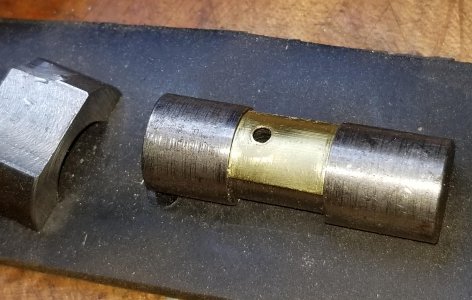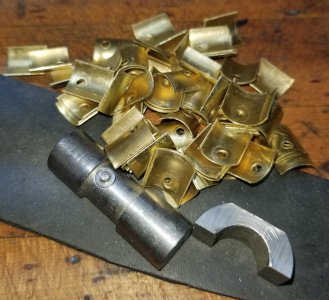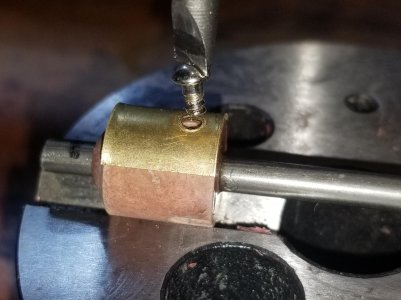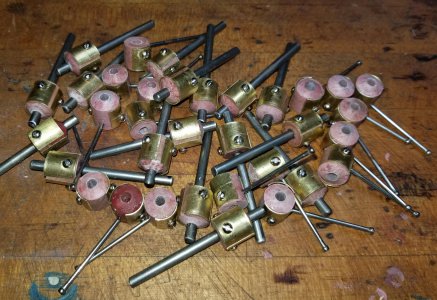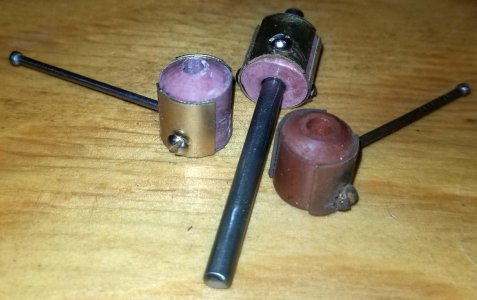- Joined
- Nov 23, 2014
- Messages
- 2,606
Also did some tooling/fixturing for dressing the ends of the armatures. The armatures had a secondary op to cut down the three legs so the wrapped wire doesn't stick out past the ends of the part. Also, the tops of the "T"s are turned down around 0.030" so the center area is ~1.030" long and the tops of the "T"s are ~0.970". That's so the center area can bear up against the armature bracket without the top of the "T" potentially hitting the bracket.
Hman had a good idea using the 4th axis on the flat. Instead of mounting the 4th, I mounted the 3-jaw chuck. Plan was to orient the parts off one of the chuck jaws, so it was trammed in before clamping the chuck to the table.
Swept a chuck jaw for angular orientation.
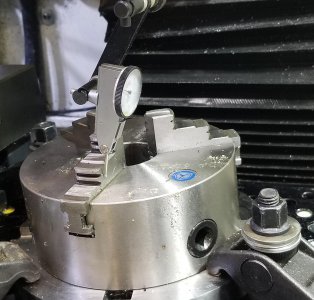
Used the Tormach's built in probing "find the center of a round boss" routine to establish X and Y.
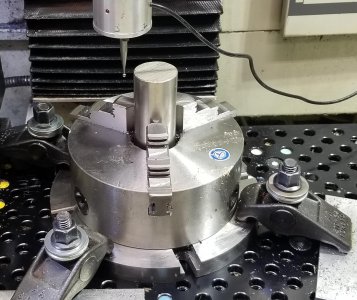
For those who don't do any CNC work, it's a WONDERFUL way to do repetitive operations. In this case, the routine would be cutting a triangle to depth on the end of the armatures. After that, it ran a circle across the top of the "T"s to relieve that area from hitting the armature bracket while the motor is running. I used the probe to find the center of the chuck, and planned on using it to find the surface of the armature to establish Z=ZERO for the proper depth of cut. Each armature needed to be machined on both surfaces, plus there were 20 or so parts to machine. Figured the best way to get away with setting the height just once, plus be able to angularly orient the parts in the 3-jaw was to make a bushing/depth stop.
Started with a 2" round of mystery steel. Faced, and cleaned up the OD.
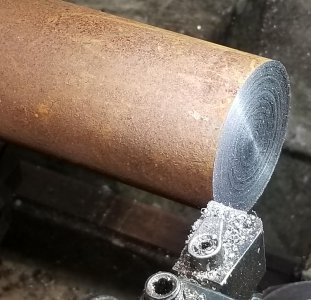
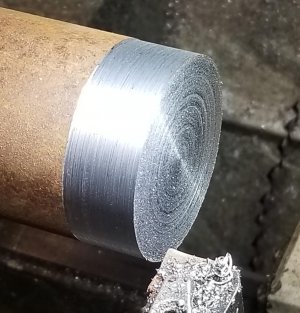
Band sawed off a length and drilled a center clearance hole.
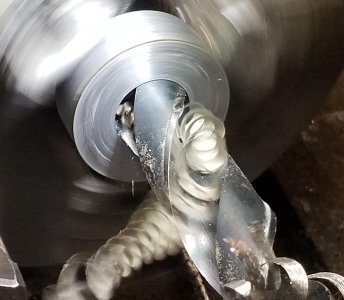
I used a planer gauge against the chuck surface to set the bushing flat. Then faced to height and bored the center so an armature was a slip fit.
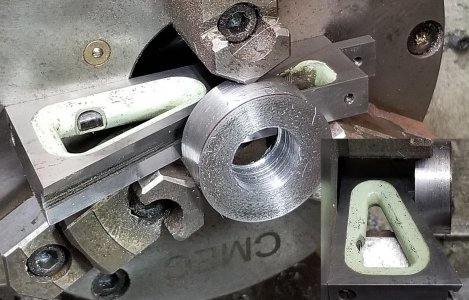
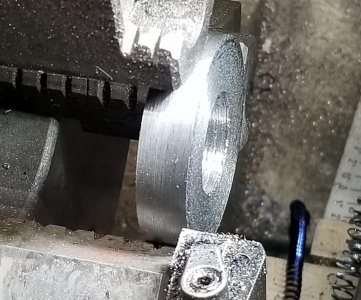
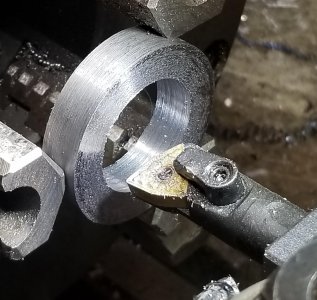
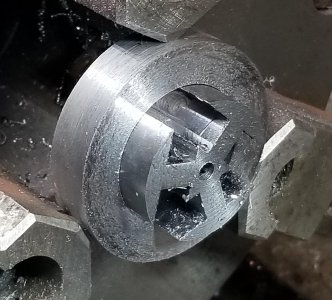
Then on to the Bridgeport to center drill, tap drill and tap a 10-24 clamp screw hole
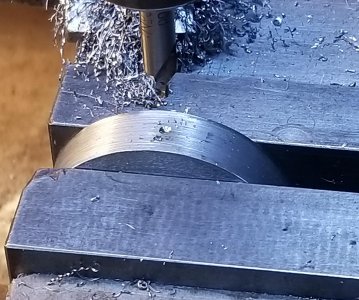
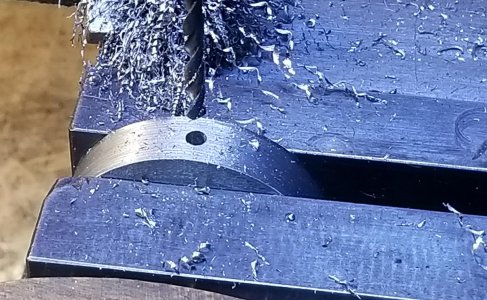
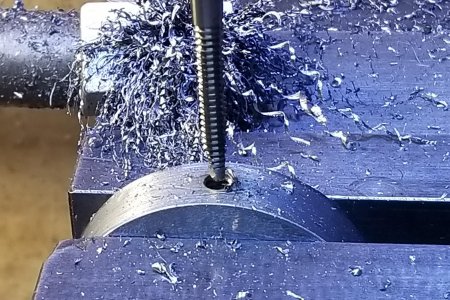
In use, I'd tap the armature surface to be cut into the bushing and tighten the cap screw. That set the surface of the armature flush with the surface of the bushing.
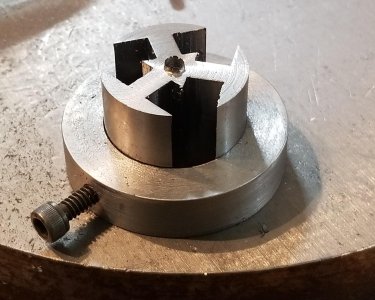
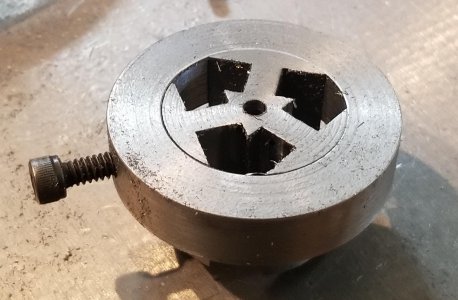
Couple of nice things about this set up. The bushing is a known thickness, so the armature surface is also. I probed the surface with an armature in the 3-jaw to set Z. As long as I kept chips off my vise deck (my reference surface) and chuck jaws, setting subsequent parts should be spot-on in Z (saves continually probing the height).
The other nice feature is the armature/bushing could be clocked before tightening the 3-jaw to get the armature angularly oriented. The bushing set on top of the vise jaws so the part didn't fall into the chuck. I clamped a square to a 1-2-3 block for an alignment fixture. Set the 1-2-3 block against the chuck jaw and rotated the armature/bushing until the "T" was flat to the square, then tightened the chuck.
Pull the bushing, hit "CYCLE START" and walk away. I LOVE this CNC for this type of work. The routine cut the legs of the "T"'s (triangular path) and did a 0.035" pass on the top of the "T"s. Made relatively quick work of the stack of armatures.
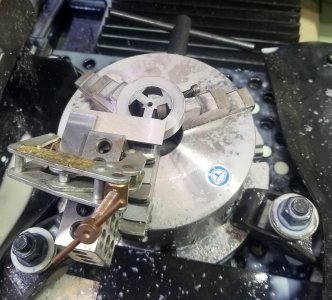
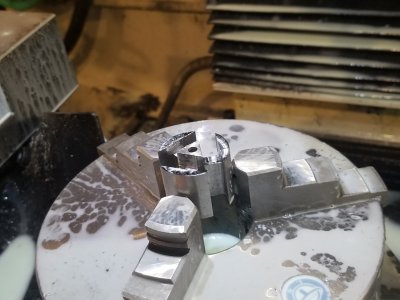
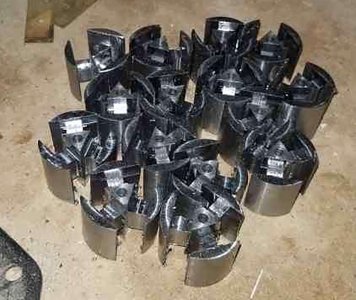
Thanks for looking, Bruce
Hman had a good idea using the 4th axis on the flat. Instead of mounting the 4th, I mounted the 3-jaw chuck. Plan was to orient the parts off one of the chuck jaws, so it was trammed in before clamping the chuck to the table.
Swept a chuck jaw for angular orientation.

Used the Tormach's built in probing "find the center of a round boss" routine to establish X and Y.

For those who don't do any CNC work, it's a WONDERFUL way to do repetitive operations. In this case, the routine would be cutting a triangle to depth on the end of the armatures. After that, it ran a circle across the top of the "T"s to relieve that area from hitting the armature bracket while the motor is running. I used the probe to find the center of the chuck, and planned on using it to find the surface of the armature to establish Z=ZERO for the proper depth of cut. Each armature needed to be machined on both surfaces, plus there were 20 or so parts to machine. Figured the best way to get away with setting the height just once, plus be able to angularly orient the parts in the 3-jaw was to make a bushing/depth stop.
Started with a 2" round of mystery steel. Faced, and cleaned up the OD.


Band sawed off a length and drilled a center clearance hole.

I used a planer gauge against the chuck surface to set the bushing flat. Then faced to height and bored the center so an armature was a slip fit.




Then on to the Bridgeport to center drill, tap drill and tap a 10-24 clamp screw hole



In use, I'd tap the armature surface to be cut into the bushing and tighten the cap screw. That set the surface of the armature flush with the surface of the bushing.


Couple of nice things about this set up. The bushing is a known thickness, so the armature surface is also. I probed the surface with an armature in the 3-jaw to set Z. As long as I kept chips off my vise deck (my reference surface) and chuck jaws, setting subsequent parts should be spot-on in Z (saves continually probing the height).
The other nice feature is the armature/bushing could be clocked before tightening the 3-jaw to get the armature angularly oriented. The bushing set on top of the vise jaws so the part didn't fall into the chuck. I clamped a square to a 1-2-3 block for an alignment fixture. Set the 1-2-3 block against the chuck jaw and rotated the armature/bushing until the "T" was flat to the square, then tightened the chuck.
Pull the bushing, hit "CYCLE START" and walk away. I LOVE this CNC for this type of work. The routine cut the legs of the "T"'s (triangular path) and did a 0.035" pass on the top of the "T"s. Made relatively quick work of the stack of armatures.



Thanks for looking, Bruce


